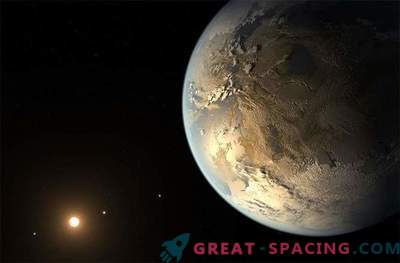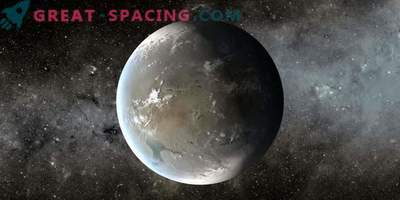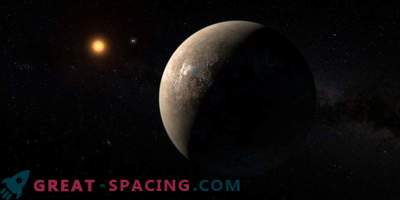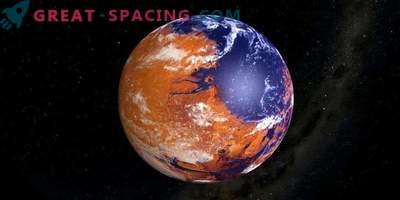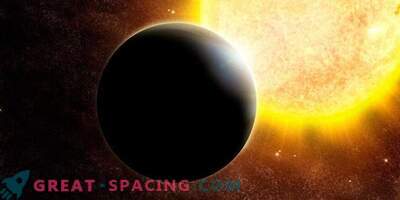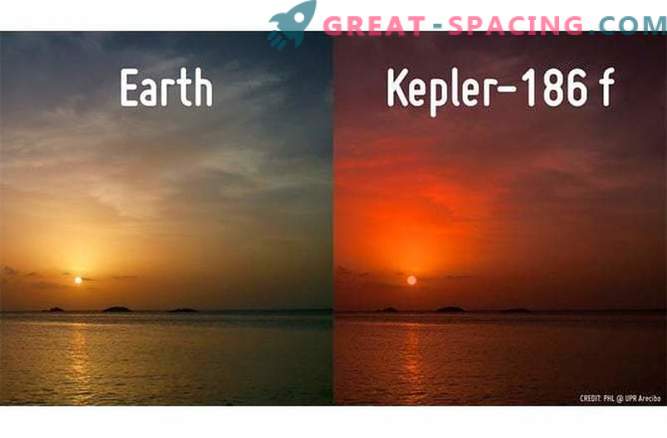
The first thing that comes to mind when receiving news is that exoplanets that are similar in their characteristics to the Earth are detected, this is an attempt to present the new world with your own eyes. Often, scientists and artists use a lot of their artistic talent to achieve this goal, but if we add real data to this, the result can be astounding.
The above computer model, created by scientists from the Laboratory of the Inhabited Planets (PHL) of the University of Puerto Rico in Arecibo, shows a very familiar picture of the Earth, but uses real data from the recently discovered habitable exoplanet Kepler-186f.
According to the report of Abel Mendez Torres, a planet scientist and director of PHL, Kepler - 186f rotates in the orbit of an M-dwarf, a star that is smaller and colder than our Sun. Thus, the zone suitable for vital activity — the region around the star, where the temperature is “just perfect” so that water remains on the surface of the planet in a liquid state — is much closer to the star than the zone of our Sun suitable for vital activity. So, Kepler - 186f receives only 32 percent of that stellar flux (that is, sunlight) that we receive on Earth. For comparison, Mars receives 43 percent of the stellar flow that Earth receives. This means that gravity on Kepler - 186f should be weaker than on Mars. As you know, Mars is covered with ice and has a small layer of the atmosphere, but if Kepler - 186f has a thicker atmosphere than the Earth, then perhaps it can have the richest reserves of liquid water on its surface.
This earth-like world is 10 percent larger than the Earth, so depending on its mass, Kepler-186f actually, like the Earth, can hold an atmosphere that is many times greater than the density of the atmosphere that Mars has today.
Sunsets on Kepler-186f can be a spectacular sight. When the planet rotates around its star in a very compact orbit (one “year” is 130 Earth days), and the M-dwarf generates less energy than our Sun, the star of the planet Kepler-186 appearing in the evening sky will be more. Starlight will be shifted towards the red end of the visible spectrum and, depending on the composition of the atmosphere, the sunset will be painted in blood red. It should be borne in mind that many assumptions have been made, since it is not known whether there is an atmosphere on Kepler at all - not to mention whether there is enough water to form an ocean (or even if there is water on the surface of the planet). But if such assumptions are correct, it may be the first real exoplanet of the “earth type”, a world that will undoubtedly be the focus of subsequent large-scale research to study several planetary characteristics.
* Note: The term "earth type" is erroneous. Although Kepler - 186f has approximately the same size as Earth and is located in the habitable zone of its star, at the moment nothing is known about the composition of its atmosphere (if it even has an atmosphere), whether there are rocks there (although scientists have a positive opinion on this) and whether it contains water. This world can be a frozen and barren planet like Mars, or a hellish pan like Venus.

